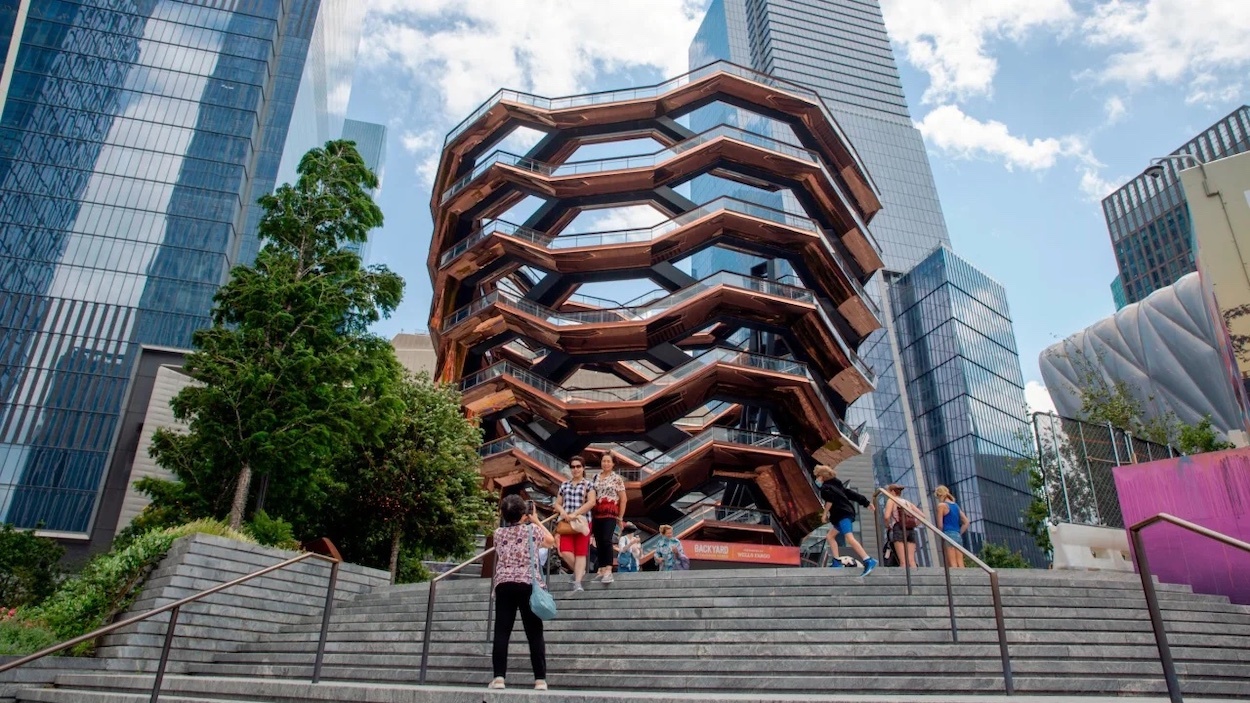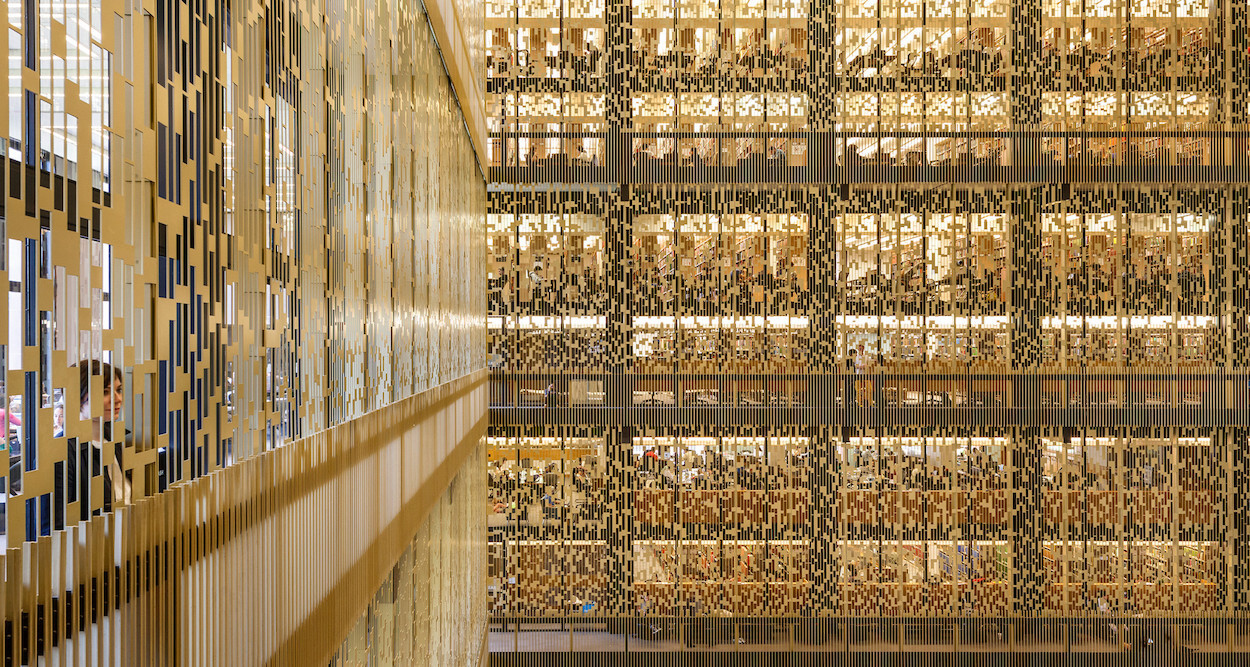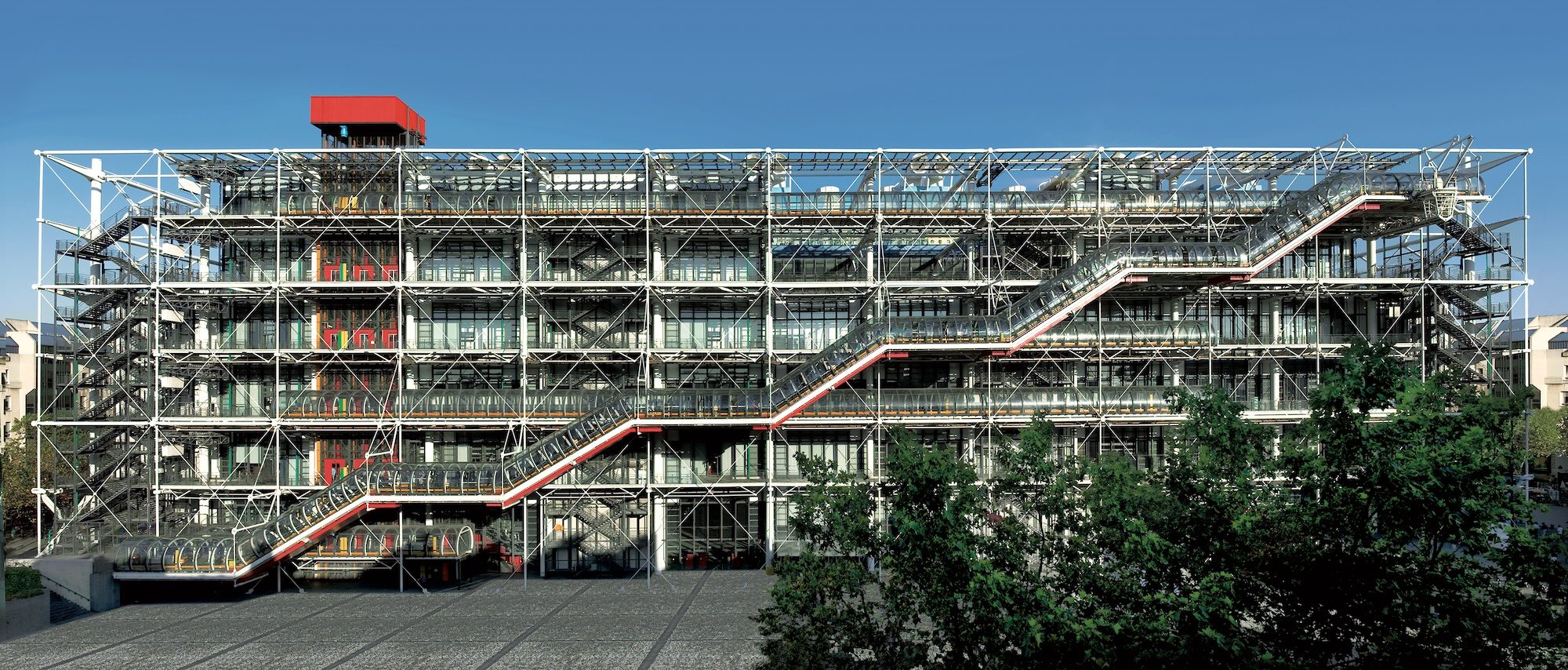Warning: this story discusses suicide. If you are having thoughts of suicide, call the National Suicide Prevention Lifeline at 1-800-273-8255 (TALK).
New York Art Week and NYCxDesign recently brought the city’s cognoscenti out to Hudson Yards for a week of marquee fairs. While traversing the manicured square on Manhattan’s West Side, our thoughts strayed away from furniture debuts and blue-chip art and instead onto the preventable suicides of four young people who jumped to their deaths at the Heatherwick Studio–designed Vessel since its 2019 unveiling.
Despite ample research showing that barriers and fences are effective at preventing suicides at places like bridges and viewing platforms, The Vessel opened with only four-foot-high glass barriers between its platforms and the open air. (The safety risk was presciently called out by writer Audrey Wachs when plans for The Vessel were first made public.) Following a spate of suicides there, the structure has closed and reopened several times without the increased safety barriers called for by suicide prevention researchers and the local community board. In 2021, a Heatherwick Studio employee even told the New York Times that such preventive measures were designed “a while back.”
The Vessel has partially reopened in the years since, and with no explanation from either Heatherwick Studio or Related Companies about why it still lacks higher barriers. In a statement to the Times, a Related spokesperson declined to discuss barriers but cited a desire to “make the Vessel safer while staying true to the intent of its design.”
“I understand that The Vessel is seen as a work of art and architecture, and there’s a certain aesthetic involved with that,” Lowell D. Kern, who chaired the community board that advocated for safety barriers at The Vessel, told the Times. “But you’re trying to balance an artistic aesthetic versus loss of life, and there’s no choice there.”
Joel Sanders, who augmented the soaring atrium of NYU’s Philip Johnson and Richard Foster–designed library with aluminum-cut panels to prevent deaths by suicide, told Artnet News about a pervasive unwillingness to discuss the topic—and the damage inflicted by such stigma. In the decade since his panels were installed, the floor-to-ceiling barriers seem to have made future deaths in the building all but impossible.
“Architects need to be part of this conversation so that moving forward we can generate new design strategies which would bring the public to the table to collaborate on spatial solutions,” he told the publication, which reported on a recent suicide at the Centre Pompidou. When reached by Artnet News for comment on whether suicide prevention measures will be part of its upcoming architectural refit, both the museum and the office of Renzo Piano, its original designer and current renovation advisor, called the issue a “delicate” matter and declined to comment further.
The future of designing for this particular public health crisis can be addressed during the design process. According to Nathalie Pauwels of Papageno, a suicide prevention program that offers guidance to architects and institutions in France, code and education are two underutilized tools. There are standards and norms for people living with disabilities and the opening of windows, she says, “but not yet for suicide prevention.”



